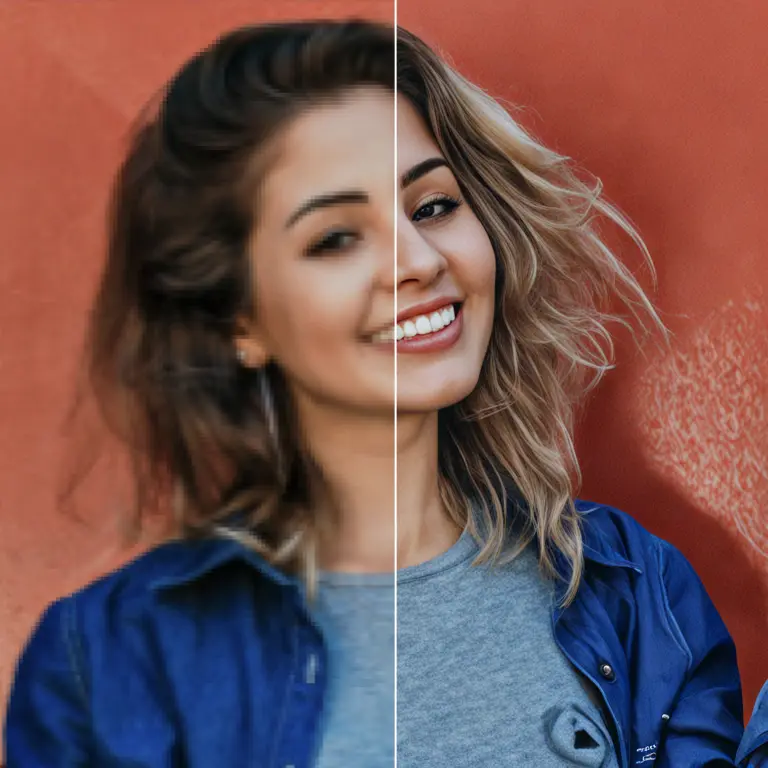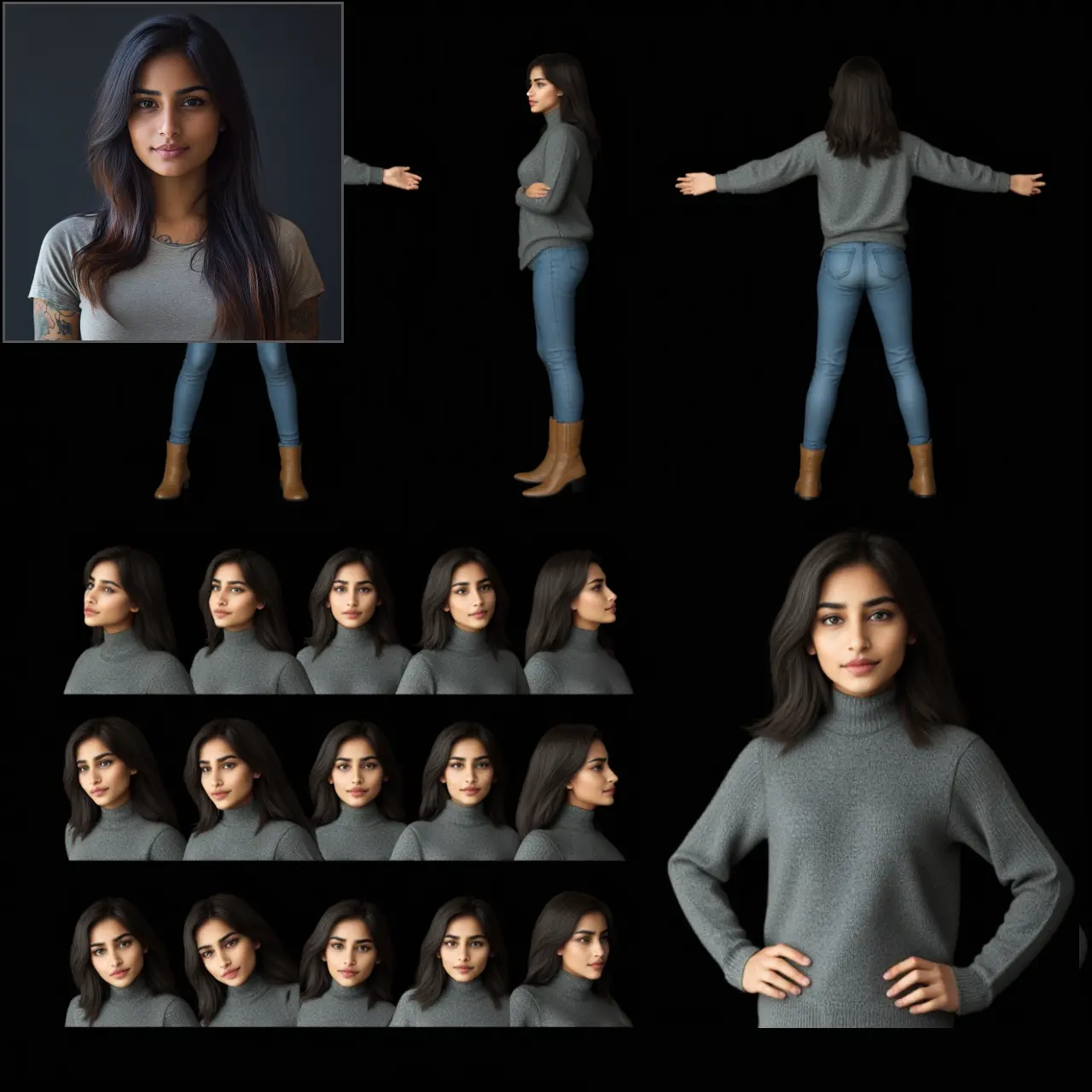ComfyUI Node: ⭐ Star FluxFill Inpainter
FluxFillSampler
Category⭐StarNodes/Sampler
Starnodes2024 (Account age: 326days) Extension
ComfyUI_StarNodes Latest Updated
2025-05-10 Github Stars
0.04K
How to Install ComfyUI_StarNodes
Install this extension via the ComfyUI Manager by searching for ComfyUI_StarNodes- 1. Click the Manager button in the main menu
- 2. Select Custom Nodes Manager button
- 3. Enter ComfyUI_StarNodes in the search bar
Visit ComfyUI Online for ready-to-use ComfyUI environment
- Free trial available
- 16GB VRAM to 80GB VRAM GPU machines
- 400+ preloaded models/nodes
- Freedom to upload custom models/nodes
- 200+ ready-to-run workflows
- 100% private workspace with up to 200GB storage
- Dedicated Support
⭐ Star FluxFill Inpainter Description
Sophisticated node for enhancing image generation with advanced sampling for inpainting tasks, memory optimization, and model adaptability.
⭐ Star FluxFill Inpainter:
The FluxFillSampler is a sophisticated node designed to enhance image generation processes by leveraging advanced sampling techniques. It is particularly adept at handling inpainting tasks, where it fills in missing or corrupted parts of an image with plausible content. The node utilizes a combination of model conditioning and noise management to produce high-quality results, ensuring that the generated content seamlessly integrates with the existing image. By optimizing memory handling and employing a variety of sampling strategies, the FluxFillSampler provides a robust solution for artists looking to create detailed and coherent images. Its ability to adapt to different model types, such as FLOW and non-FLOW models, further enhances its versatility, making it a valuable tool for AI artists seeking to push the boundaries of their creative projects.
⭐ Star FluxFill Inpainter Input Parameters:
model
The model parameter specifies the machine learning model used for the sampling process. It determines the type of model architecture, such as FLOW or non-FLOW, which influences the sampling strategy and the application of techniques like TeaCache. The choice of model affects the quality and style of the generated images. There are no explicit minimum, maximum, or default values, as this parameter depends on the available models in your environment.
seed
The seed parameter is a numerical value that initializes the random number generator used in the sampling process. It ensures reproducibility of results, allowing you to generate the same image multiple times by using the same seed. The seed can be any integer, with no specific minimum or maximum value, but it is crucial for achieving consistent outputs.
steps
The steps parameter defines the number of iterations the sampling process will perform. More steps generally lead to higher quality images, as the model has more opportunities to refine the output. However, increasing the number of steps also requires more computational resources and time. The minimum value is typically 1, with no strict maximum, but practical limits depend on your hardware capabilities.
cfg
The cfg parameter, or configuration, adjusts the balance between adhering to the model's learned patterns and introducing randomness. It influences the creativity and variability of the generated images. A higher cfg value results in more adherence to the model's training data, while a lower value allows for more randomness. The default value is often set around 1.0, with no strict minimum or maximum.
sampler_name
The sampler_name parameter specifies the sampling algorithm to be used. Different algorithms can produce varying results in terms of style and quality. The choice of sampler can significantly impact the final image, and it is often selected based on the desired artistic effect. There are no explicit minimum, maximum, or default values, as this parameter depends on the available samplers in your environment.
scheduler
The scheduler parameter manages the progression of the sampling process, determining how the model's parameters are updated over time. It plays a crucial role in ensuring that the sampling process converges to a high-quality result. The choice of scheduler can affect the speed and stability of the sampling process. There are no explicit minimum, maximum, or default values, as this parameter depends on the available schedulers in your environment.
conditioning_pos
The conditioning_pos parameter provides positive conditioning information to guide the sampling process. It helps the model focus on specific features or patterns that should be emphasized in the generated image. This parameter is crucial for tasks like inpainting, where maintaining consistency with the existing image is important. There are no explicit minimum, maximum, or default values, as this parameter depends on the specific task and model.
conditioning_neg
The conditioning_neg parameter provides negative conditioning information, which helps the model avoid certain features or patterns during the sampling process. It is useful for steering the model away from undesired outcomes and ensuring that the generated image aligns with the artist's vision. There are no explicit minimum, maximum, or default values, as this parameter depends on the specific task and model.
latent
The latent parameter represents the initial latent space representation of the image. It serves as the starting point for the sampling process, and its quality and structure significantly influence the final output. The latent space is typically a high-dimensional representation that captures the essential features of the image. There are no explicit minimum, maximum, or default values, as this parameter depends on the specific task and model.
denoise
The denoise parameter controls the amount of noise reduction applied during the sampling process. It affects the clarity and smoothness of the generated image. A higher denoise value results in a cleaner image, while a lower value may retain more texture and detail. The default value is often set around 1.0, with no strict minimum or maximum.
⭐ Star FluxFill Inpainter Output Parameters:
out_latent
The out_latent parameter is the final latent space representation of the generated image after the sampling process. It encapsulates the refined features and details that have been introduced during sampling. This output is crucial for further processing or conversion into a visual image, as it contains all the necessary information to reconstruct the final artwork.
⭐ Star FluxFill Inpainter Usage Tips:
- Experiment with different
seedvalues to explore a variety of creative outputs while maintaining reproducibility for your favorite results. - Adjust the
stepsparameter to balance between image quality and computational efficiency, especially when working with limited resources. - Use the
cfgparameter to control the level of creativity in your images, with higher values for more realistic outputs and lower values for more abstract results.
⭐ Star FluxFill Inpainter Common Errors and Solutions:
"Failed to apply TeaCache"
- Explanation: This error occurs when the TeaCache functionality cannot be applied to the model, possibly due to compatibility issues or missing dependencies.
- Solution: Ensure that all necessary dependencies for TeaCache are installed and that the model is compatible with TeaCache. Check the logs for more detailed error messages and address any specific issues mentioned.
"Sampling process did not converge"
- Explanation: This error indicates that the sampling process failed to produce a stable result, possibly due to inappropriate parameter settings.
- Solution: Review and adjust parameters such as
steps,cfg, andschedulerto ensure they are suitable for the model and task. Increasing the number of steps or adjusting the scheduler settings may help achieve convergence.
⭐ Star FluxFill Inpainter Related Nodes
RunComfy is the premier ComfyUI platform, offering ComfyUI online environment and services, along with ComfyUI workflows featuring stunning visuals. RunComfy also provides AI Playground, enabling artists to harness the latest AI tools to create incredible art.



